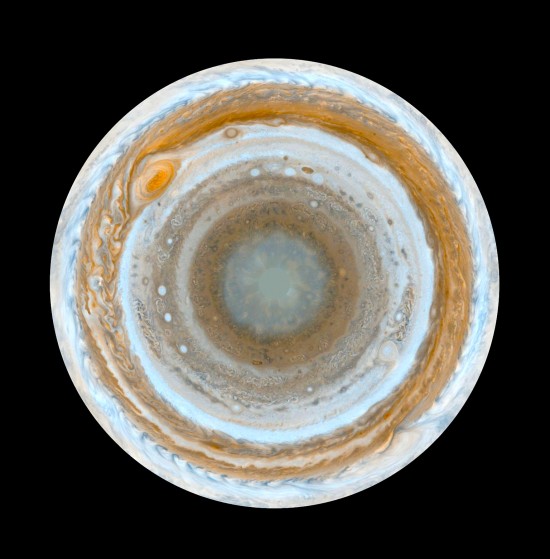Aug 21, 2015
Hot polar regions are common among planets and moons.
Scientists using the Very Large Telescope (VLT) discovered a ten degree Celsius temperature difference above the polar region of Neptune. Another consideration that has not been published regarding Neptune’s polar thermocline, is that the “hot spots” can be seen in higher latitudes, moving through the stratosphere. The conventional explanation sees only the “upwelling of gas” from deep within the giant planet.
Also, Picture of the Day articles about Saturn demonstrate that its south pole is hotter than can be explained by the relatively dim sunlight that it receives. A mechanical view of the anomalies in the south fails to explain the increased temperature there. Also on Saturn, mysterious white spots, three times larger than Earth, sometimes appear in the upper atmosphere.
One explanation that could be applicable to this observation, as well as the hot spots on Neptune: electric discharges. Massive lightning bolts could be going off deep below the clouds on Neptune, creating colossal eruptions of plasma into its upper atmosphere. Those electric discharges could create the conduits, called “Birkeland currents”, that would allow a direct plasma connection from Neptune to space. Thermal imaging equipment sees the tops of such charge flows coming up from below and interprets them as radiant heat.
Hot poles and intense electrical aurora have been detected on Saturn, Jupiter, Io, Enceladus, Venus and many other celestial objects within the Solar System. The various discharge effects have been shown to be charged plasma. The planets are constantly fed with electrical energy, as the Electric Universe theory posits. The influx of ions generates heat and light, similar to the aurorae at Earth’s poles, except orders of magnitude larger.
Saturn’s polar hexagon was originally seen by cameras onboard the twin Voyager spacecraft that flew by Saturn in November 1980 and then again in August 1981. NASA researchers continue to refer to the structure as “unexplained,” since interpretations of Saturn’s weather do not include mechanisms by which clouds can organize themselves into polygonal shapes. However, beams of electricity flowing through plasma produce a central column surrounded by concentric cylinders. The cylindrical current filaments exhibit long-range attraction and short-range repulsion, resulting in evenly spaced vortices surrounding the column. A hexagonal cross-section forms within the innermost column. Weather patterns, such as hurricanes on Earth, also exhibit hexagonal “eyes” that defy conventional explanation.
The hexagon at Saturn’s north pole is another example of electrical activity in the Solar System on a tremendous scale.
In the standard model of the Solar System, thermal radiation is the only mechanism that can explain the heat coming from planetary poles. The scientific community does not possess the thermal emission spectra for Neptune from even as short a time as 40 years ago, so they are limited to observational evidence collected by recent instrumentation.
The phenomena observed on Neptune, Saturn, Jupiter, and other celestial objects find no explanation from conventional theory that makes sense of the data. In the Electric Universe model of the gas giants, hot spots, hot poles, winds blowing at a thousand kilometers an hour, confined bands of atmosphere with little internal turbulence, and many other observations suggest energetic planets that are part of a circuit connecting the Sun with its plasma sheath, the heliopause.
Electricity moves along charged Birkeland current filaments that bind the Sun to its family of planetary bodies. Electric charge flows most strongly into the giant gas planets because their charge differential with the Sun is greater than that of their smaller, rocky cousins. The “electric Sun” is what drives the energetic meteorological phenomena on the planets. Electric circuits power the Sun and initiate the “anomalous heating” that has been found on the gas planets and some rocky bodies that have been examined.
Stephen Smith













